- Django Interview Questions
- Python Array Examples
- Python enum
- Python Enumerate with Example
- Python Flask Tutorial For Beginners
- Python For Beginners - Way To Success
- Python For Data Science Tutorial For Beginners
- Python for loop
- Python GET and POST Requests
- Python IDEs for Python Programmers
- Python Interview Questions
- Python Lists with Examples
- Python Partial Function Using Functools
- Python Print
- How to generate random numbers in python
- Python Regular Expression (RegEx) Cheatsheet
- Python Sleep Method
- Python List Methods
- Python Split Method with Example
- Python String Functions
- Python Tutorial
- Python Variable Types
- Python vs Java
- Python vs SAS vs R
- Python Operators
- Code Introspection in Python
- Comprehensions in Python
- Python Exception Handling
- Defining Functions - Python
- Generators & Iterators in python
- Install Python on Windows and Linux
- Introduction to Python Programming
- Lists concepts in Python
- Loops in Python
- Regular Expression Operations in Python
- Python Serialization
- String Formatting - Python
- R vs Python: Which is better R or Python?
- Six Digit Salary With Python
- Top 20 Python Frameworks List
- Why Learn Python
- Python Substring
- OOPs Interview Questions
- Career Shift To Python : Success Guaranteed
- Face Recognition with Python
- Go vs Python
- Pyspark Interview Questions
- Python Pandas Interview Questions
- OpenCV Interview Questions
- Python Project Ideas
- Flask Interview Questions and Answers
- Array Interview Questions
- What is PyCharm?
- What is Seaborn in Python?
- What is Anaconda Navigator
- Numpy Broadcasting - Detailed Explanation
- Python Data Science Interview Questions
- Genpact Interview Questions
- Python Developer Job Description
- Pandas Projects and Use Cases
- DataFrame Tutorial
- How to install Python on Windows
- Pyspark DataFrame
Tata Consultancy Services (TCS) is a multinational company known for offering IT services and has its headquarters in Mumbai, India. It provides consultancy and software services in diverse industries, such as finance, healthcare, education, life science, insurance, energy, and retail. The company also offers analytics, IoT, blockchain, AI, cyber security, and automation services.
As far as the recruitment process for this company is concerned, it begins and ends with varying rounds. Throughout this process, you will be asked a variety of questions related to yourself, your work experience, your educational background, and more.
Now that you think you are ready to appear for an interview and grab a job at this company, MindMajix has brought a thorough, well-researched list of TCS interview questions in this post. So, without further ado, let’s get started with it.

- TCS Interview Process
- TCS Technical Interview Questions
- TCS Leadership Principles
- Tips to Crack TCS Interview
- FAQs
- Conclusion
Top 10 Frequently Asked TCS Interview Questions
- What is the use of Scope in Python?
- State the differences between Tuples and Lists.
- Briefly describe ClassLoader in Java.
- Distinguish JRE, JDK, and JVM.
- Explain RDBMS.
- What are the constraints used in SQL?
- Describe Structures in C.
- Compare C and C++.
- List the different Types of Functional Testing.
- When is mutation testing performed?
TCS Interview Process
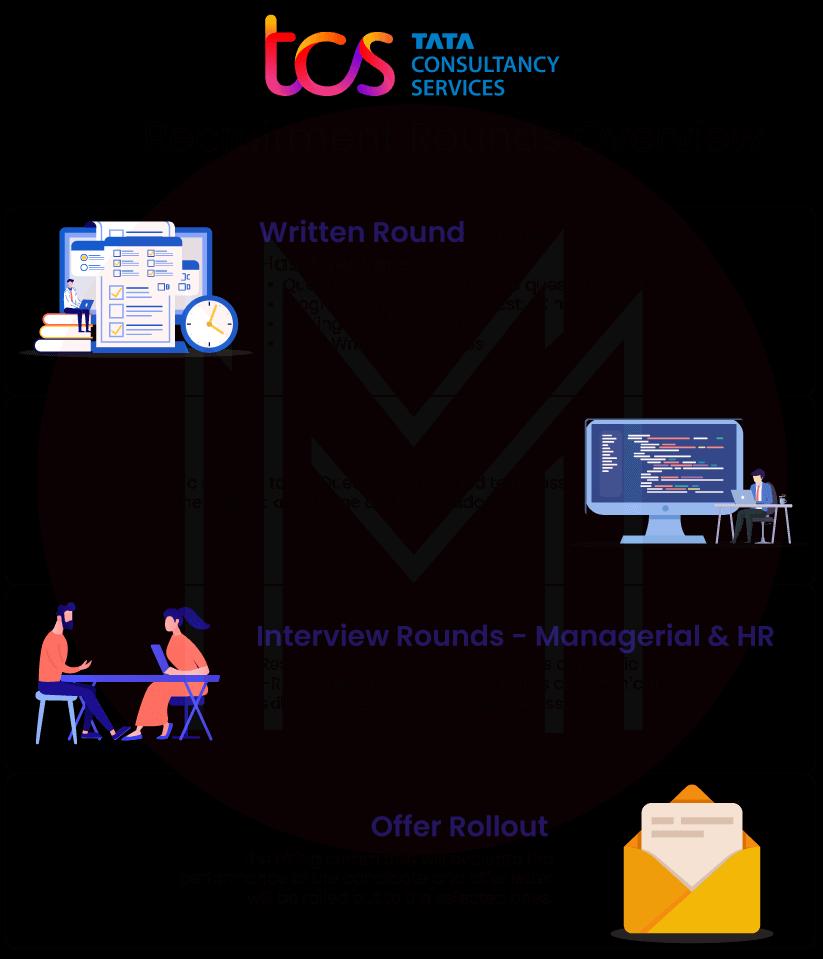
TCS is one company that continues to hire people throughout the year. They have both off-campus and on-campus drives. Not just that, the organization also conducts several exams each year to hire new candidates, such as:
- TCS National Qualifier Test (NQT)
- TCS iON
- TCS Digital
- TCS Codevitta
Generally, the company either conducts one interview where they have one MR session, one HR session, and one technical session. Or, they conduct two different rounds, one for the technical interview and the other for the HR session and MR session. Here is what you need to know about the TCS interview process:
Interview Rounds
1. Aptitude Test (TCS NQT)
This one is an online exam that is conducted on the platform TCS iON. This exam is divided into two sections, such as
- Foundation Section: The foundation section is meant to test your traits, verbal ability, reasoning ability, and numerical ability.
- Advanced Section: This section evaluates your advanced reasoning ability, advanced coding ability, and advanced quantitative ability.
2. Technical Interview
Just as the name suggests, the technical interview round is all about programming and technical questions. Once you have cleared your online exam, you will have to take this round. Herein, you will be asked some of the common questions, for example, about yourself, your past projects, preferred programming languages, and other technical questions concerning varying aspects and topics.
3. Managerial Round
In this round, you will find a few things from the technical round but in a more stringent way. The team of interviewers will be raising questions and doubts on your answers to cross-check whether you are capable of handling stress or not. Once you have reached this round, you must stay confident, calm, and have clear thoughts. Upon clearing this round, you will be sent for the HR round.
4. HR Interview
Once you have cleared the previous round, you will be taken for the HR interview round. As specified, HR will ask you a few basic questions. Throughout this round, you can even put forth questions from your end and clear out doubts if any.
TCS Technical Interview Questions
TCS Python Interview Questions
1. List the main advantages of Python language.
Below are the various main advantages of Python language.
- Python is an easy-to-learn language
- It is a dynamically typed language
- It is an interpreted language
- It comes with vast libraries
- The developer community of Python is large
- It is highly portable
- The use cases of Python are endless.
| If you want to enrich your career and become a professional in Python, then enroll in "Python Training" - This course will help you to achieve excellence in this domain. |
2. What is the use of Scope in Python?
The Scope is a variable that we can only find inside the region where it is created. We use Scope to locate a name in a specific region of a program.
Scopes are generally implemented as dictionaries that help map names with objects. The dictionaries are known as namespaces.
In Python, there are totally four types of scopes, as depicted below:
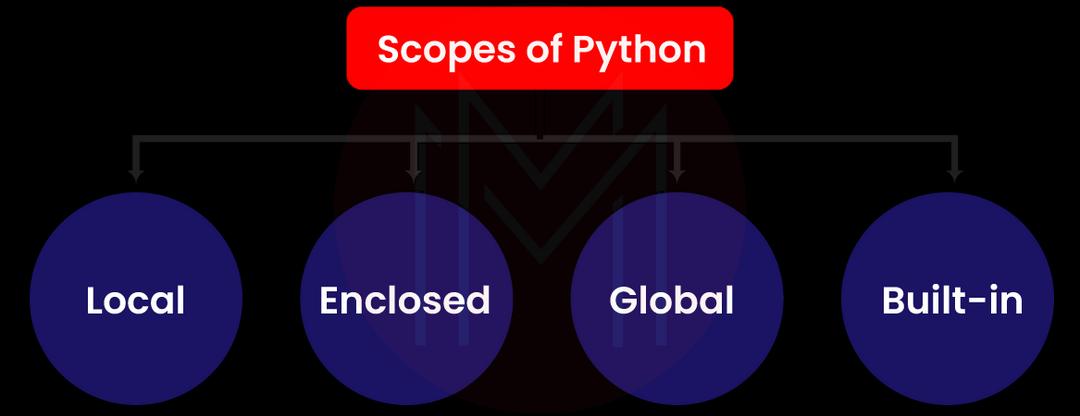
3. What is the role of the pass statement in Python?
The pass statement acts as the placeholder for the future code. Also, it is a null statement.
For example, we may have a loop or function that still needs implementation. But if we intend to implement it in the future, we can use the pass statement to accomplish the same.
4. What do you understand by ‘Self’ in Python?
‘Self’ is nothing but an instance of a class. We use ‘self’ to access a class's attributes, variables, and methods of objects.
We use self in Python since Python doesn’t use @ syntax to refer to instance attributes.
5. What do you mean by dictionary and list comprehensions?
Dictionary comprehensions help create dictionaries from iterable. They also help transform dictionaries. Python allows the creation of nested dictionary comprehensions.
List comprehensions help to create better lists than 'for' loops. It also allows the creation of lists from the existing lists.
6. State the differences between Tuples and Lists.
| Tuples | Lists |
| They are immutable | They are mutable |
| They are faster | The implication of iterations is slow |
| They consume less memory | They consume more memory |
| They rarely occur | Unexpected errors occur frequently |
| They have fewer built-in methods | They have many built-in methods |
7. Compare: break, Pass, and continue statements in Python.
We use break statements in Python to terminate a loop and continue executing statements out of the loop. In other words, the program control moves out of the loop once this statement is executed and starts executing the statements that follow the loop. We use this statement for and while loops.
We use past statements to do nothing inside a code block. The codes can be used later. We also use pass statements for exception catching.
Regarding the continue statement, it stops the execution of the current iteration and starts the next iteration. On the other hand, the break statement terminates the loop.
8. How can you copy objects in Python?
We can create copies of objects in two ways: deep and shallow. A shallow copy makes new objects that store the reference of the original elements.
When it comes to deep copy, it creates new objects. It also makes copies of nested objects present in the original elements.
9. Why is Python known as an interpreted language?
Python reads codes line by line and throws errors at any stage if it finds them. It also releases results up to the stage it completed execution. Thus, it simplifies debugging process.
Python can run on any platform since it avoids recompiling codes for different platforms. This is another reason for calling Python an interpreted language.
It is a simple but essential note that Python is both a compiled as well as interpreted language.
10. How is inheritance applied in Python?
A class in Python can inherit another class's properties and methods. The parent or base class is the one from which another class inherits the properties. A child class or derived class inherits properties from a parent class.
TCS Java Interview Questions
11. What are the prime features of Java language?
The following are the prime features of Java.
- Java is a simple and easy-to-understand language
- It is platform independent
- It is an OOPS-based language and an interpreted language
- It comes with solid memory management features
- It is one of the highly secure languages
| Related Article: Java Tutorial |
12. What is the role of the JIT compiler?
As the name suggests, the JIT compiler compiles codes just in time or on the fly. JIT compiler is nothing but a component of the runtime environment, which plays a pivotal role in the performance of Java applications. Mainly, it compiles byte codes into native machine codes at runtime. The machine codes can then be sent to processors directly.
13. Briefly describe ClassLoader in Java.
ClassLoader is nothing but a part of the Java runtime environment. It loads Java classes into JVM dynamically. There are three types of classloader as follows:
- Bootstrap ClassLoader: It is a parent classloader or primordial class loader.
- Extension ClassLoader: It is the child of the bootstrap classloader. It loads the extension of Java classes using JDK.
- System ClassLoader: It is the child of the extension class loader. It loads the application-type classes.
14. Name the different access specifiers of Java.
The other access specifiers of Java are listed below:
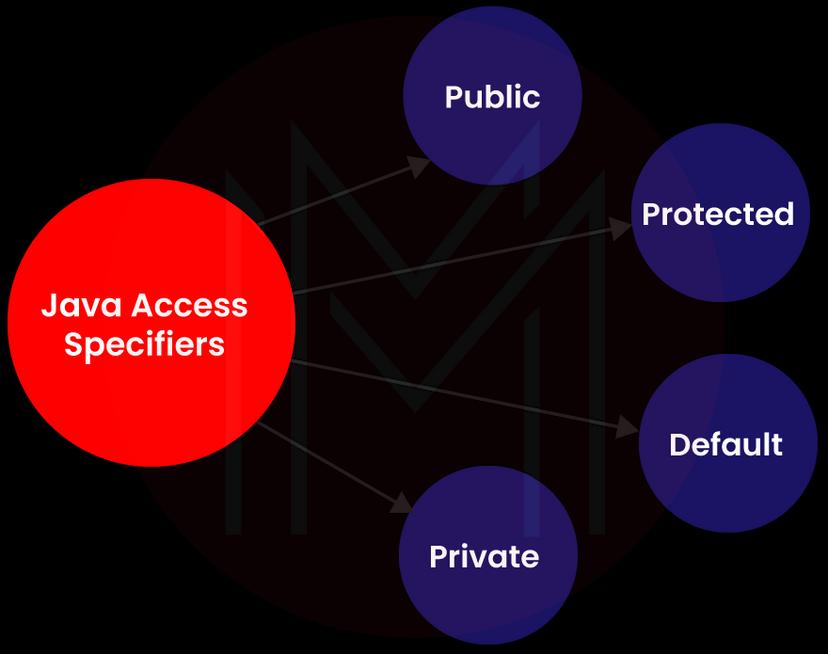
15. What are the benefits of this ( ) keyword?
The this () keyword essentially indicates the current object in a constructor or method. We use this () keyword for many reasons. Here are they:
- It eliminates the confusion between class parameters and attributes
- It helps to return the current class object
- It helps to invoke the current class constructor or method
- It supports passing an argument in the constructor call or method call.
16. Differentiate C++ and Java.
| C++ | Java |
| It is platform dependent | It is platform independent |
| Memory is managed manually | Memory is system-controlled |
| It is both procedural as well as object-oriented language | It is an object-oriented language. |
| It is compiled language | It is interpreted and compiled language |
| Portability is poor | It has good portability |
| It supports multiple inheritances | It supports only single inheritance. |
17. Distinguish JRE, JDK, and JVM.
| JRE | JDK | JVM |
| JRE refers to the Java runtime environment | JDK refers to the Java development kit | JVM refers to Java virtual machine |
| It provides class libraries of JVM, Java, and other components. | It supports developing Java applications | it gives the runtime environment |
| It creates the environment for the execution | It executes Java codes | It specifies all implementations. |
| It is platform dependent | It is platform dependent | It is platform-independent |
| It is the superset of JVM | It has developed tools such as compilers, JavaDoc, Java Debugger, etc. | It is an abstract machine that converts byte code into native machine code. |
18. Can we overload constructors in Java?
Yes. It is possible to overload constructors in Java.it is done based on the number as well as the types of arguments.
Know that we use constructors to initialize data elements when we create classes. A class can have many constructors.
19. How is a constructor in Java different from a method?
| Constructor | Method |
| It is a block of codes used to create new objects | It is a set of statements used to perform specific tasks. |
| Subclasses cannot inherit constructors | Subclasses can inherit methods |
| It is used when initializing objects | It is associated with the functionalities of objects |
| It has no return types | It has return types |
| It cannot have different names than class | It can have names other than class |
20. Mention the restrictions that are usually applied to Java static methods.
Following are the restrictions that we apply to Java static methods:
- Static methods cannot use non-static data members. It means that they cannot invoke non-static methods directly
- The static methods can only access static data types.
- We cannot use this() and super keywords in static methods
- They cannot be overridden in subclasses.
TCS SQL Interview Questions
21. List the different subsets of SQL.

22. Explain RDBMS?
RDBMS refers to Relational Database Management Systems. RDBMS is a relational database that we use to store, manage, and retrieve data efficiently. It is the underlying working principle of all the popular database management systems like SQL, IBM DB2, MySQL, etc.
Know that RDBMS contains tables where data is stored. The main thing is that data in a table relates to another table. In this regard, we use Primary keys as well as foreign keys to relate the data in the tables.
| Related Article: RDBMS Interview Questions |
23. What are character manipulation functions in SQL?
Following are the character manipulation functions used in SQL.

24. Outline the different clauses widely used with SELECT query in SQL.
Here are the various clauses used with SELECT queries in SQL.
- WHERE: We use this clause to filter records based on certain conditions.
- GROUP BY: We use this clause to group or summarize data based on identical data.
- ORDER BY: We apply this clause to perform ascending and descending order of data
- HAVING: It is similar to the WHERE clause but filters out aggregated records. It combines with the GROUP BY clause and performs filtering operations.
25. What are the constraints used in SQL?
Below are the various constraints used in SQL.
- NOT NULL
- PRIMARY KEY
- FOREIGN KEY
- UNIQUE
- DEFAULT
- CHECK
- CREATE_INDEX
26. State the differences between OLAP and OLTP.
| OLAP | OLTP |
| It refers to online analytical processing | It refers to online transaction processing |
| It manages a large volume of complex queries. | It manages a large number of small transactions |
| It deals with complex queries | It deals with standardized queries |
| It takes a long time to process complex queries. | It is faster in execution |
| It uses data warehouses | It uses databases |
27. Define the NVL function in SQL.
This function replaces null with a meaningful alternative in the results of a query. And this function accepts two arguments. The arguments can have the same or different data types.
The syntax of this function is given as follows
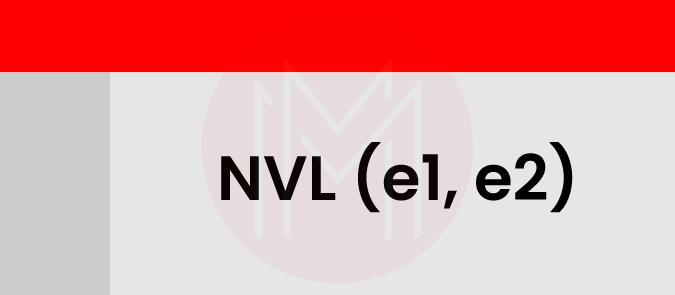
28. What is the crucial difference between DENSE RANK () and RANK ( ) functions?
When it comes to the RANK ( ) function, it assigns the same rank if two data items have the same values. But the following value won't be the continuation of the previous rank, but it will be skipped by one value.
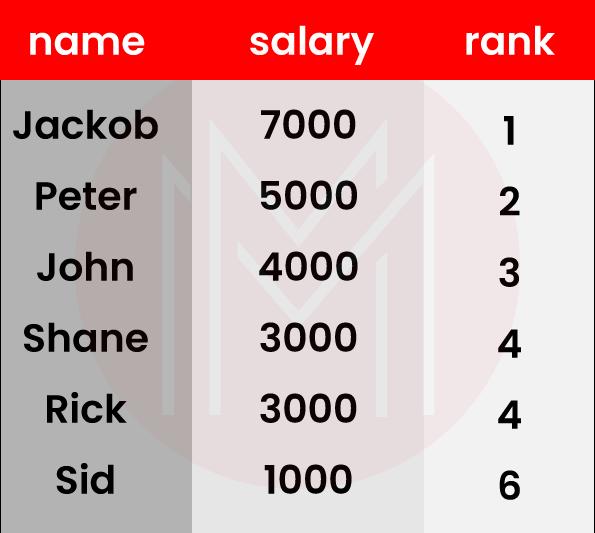
When it comes to the DENSE RANK () function, it functions like the RANK () function. The difference is that there is no skipping of values. If two data items have the same value, the following data item will continue the previous value.

29. How can we create temporary tables in the SQL server?
We can create temporary tables in SQL servers in two ways
- By using the SELECT INTO approach
- By using the CREATE TABLE approach
30. How can we remove duplicate rows in SQL?
- First, we must use the GROUP BY clause or ROW_number ( ) function to find duplicate rows.
- Then, we need to use the DELETE statement to remove the duplicate rows.
TCS C Language Interview Questions
31. Name the four principles of Object-oriented programming.
Below are the four principles of Object-oriented programming.
- Abstraction: According to this principle, users will get only the necessary information. The information is irrelevant to users will be hidden.
- Encapsulation: According to this principle, the data and code are wrapped in one place.
- Inheritance: This principle deals with sharing properties of objects. According to this principle, an object can inherit the properties of another object. The object that shares its properties is the parent object, whereas the object that receives the properties is the child object.
- Polymorphism: This principle deals with representing data in different forms.
| Related Article: OOPs Interview Questions |
32. State the advantages and disadvantages of Macros
Advantages
- Increased productivity
- Customization
- Ease of use
- Enhanced accuracy
- Compatibility
Disadvantages
- Security risks
- Compatibility issues
- Complexity
- Dependence
- Limited functionality
33. Mention the different storage classes in C.
Following are the different storage classes used in C.

34. Describe Structures in C.
- The structure is one of the user-defined data types used in the C language. It combines one or more data types together and makes it a single data type.
- We use the struct keyword to create structures. We can the data type created with Structures in C for defining pointers. This data type can also pass function arguments or return from the function.
- A structure with one or more structures inside is known as a nested structure.
35. What do you understand by pointers in C?
They are variables that store the memory address of another variable. A pointer may have different data types, such as integer, double, character, etc.
36. What are the differences between interfaces and classes?
| Interfaces | Classes |
| An interface cannot have methods | A class can have methods |
| It is declared through the interface keyword | It is declared through the class keyword |
| We cannot create objects | We can create objects |
| We cannot include constructors in interfaces | We can include constructors in a class |
| Interfaces support multiple inheritances | Classes don’t support multiple inheritances |
| Members of a class are always public. | Class members can be default, private, public, and protected. |
37. Create a C program to reverse a string.
Code:
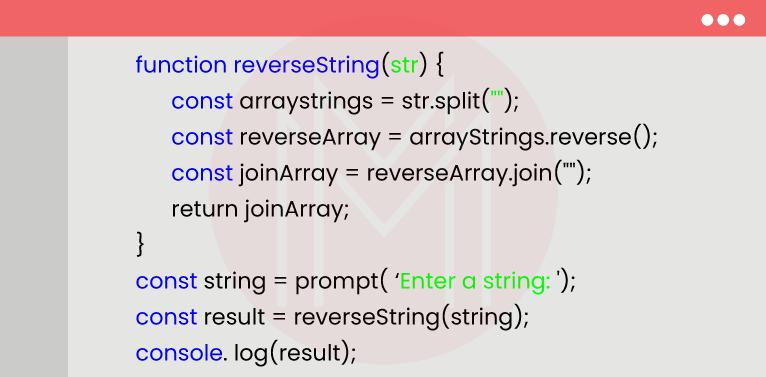
Result
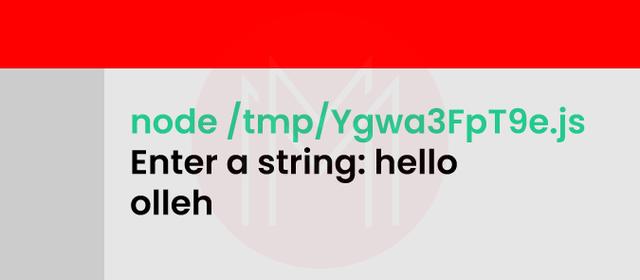
38. Compare C and C++.
| C | C++ |
| It is a structural programming language | It is an object-oriented programming language |
| It doesn’t support OOP concepts such as inheritance, polymorphism, encapsulation, and abstraction. | It supports OOP concepts |
| It is a function-driven language | It is an object-driven language |
| It doesn’t support built-in data types | It supports built-in data types |
| It doesn’t support reference variables | It supports reference variables. |
39. Write a program to sum the elements in an array in C language.
Program
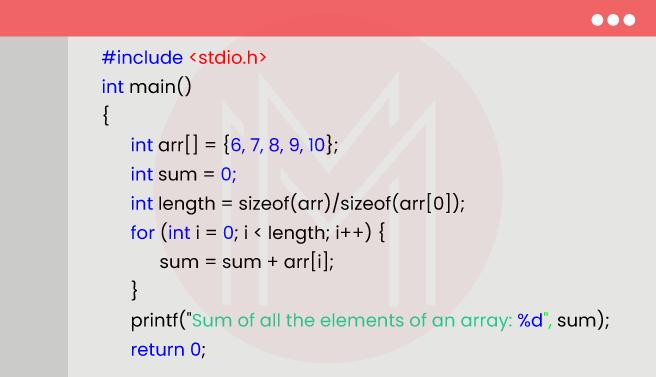
Result

40. How dynamic memory allocation takes place in C.
Dynamic memory allocation in C is done with the help of malloc (),realloc (),calloc (), and free () functions.
We use the malloc () function to allocate a large memory block. We use the calloc () function to assign a specified number of blocks.
We use the free () method to deallocate the memory. We use the realloc () method to change the memory allocation dynamically.
TCS Testing Interview Questions
41. Briefly describe software testing.
It is a process performed on software or application to test whether they work as we intend. By doing software testing, we identify errors in the software and rectify them, reduce development costs, and eventually improve performance.
42. How is static testing different from dynamic testing?
Static testing is conducted to find errors at the beginning of software development. On the other hand, we conduct dynamic testing to detect code defects. It is the process of testing a program without executing it, whereas dynamic testing is the process of testing software by running them.
Static testing can be conducted through walkthroughs, informal meetings, peer reviews, and inspections. They can also be found through control flow, data flow, etc.
43. Outline the advantages of dataflow testing.
Here are the key advantages of dataflow testing.
- It pinpoints a declared variable that is not used in a program
- It identifies a variable that is declared multiple times
- It helps to identify a variable this is used but not declared
- It detects variables that are deallocated before they are used.
44. List the different types of functional testing.
The below graphic shows the different types of functional testing.

45. What exactly is STLC?
STLC stands for software testing lifecycle. We apply this process to test software and verify whether the software meets the specified quality criteria. There are usually many phases in STLC.

With STLC, we can increase the consistency and effectiveness of the software. This systematic process helps perform quick testing and address issues quickly.
| Related Article: Software Testing Life Cycle(STLC) - Phases of Software Testing |
46. Can we conduct system testing at any stage?
No. We should conduct system testing only when all the software modules are integrated. Not only that, all the modules should work correctly. Note that system testing is performed before user acceptance testing.
47. What are the differences between test drivers and test stubs?
| Test drivers | Test stubs |
| We use drivers in bottom-up integration testing | We use stubs in top-down integration testing |
| They are used in higher-level modules | They are used in low-level modules |
| They are known as calling programs | They are known as called programs |
48. Why is it difficult to test a program completely?
Here are the reasons why it is challenging to test programs completely.
- Software specifications are usually subjective
- Programs must be tested with different testing scenarios
- It is necessary to conduct testing with many inputs and combinations of inputs.
- There may be different interpretations.
- Technology and the environment associated with the program may change constantly.
49. Compare regression testing with retesting.
| Regression Testing | Retesting |
| We conduct this testing to test the entire software | We perform this testing to test the specific feature of a software |
| It is done for the passed test cases | It is done for the failed test cases |
| We perform this testing to ensure the software works appropriately after updates. | We perform this testing to ensure that the not working part of a program works well after debugging. |
| It is an ideal case for automation | It is not suitable for automation |
| It is a part of STLC | It is a part of the defect lifecycle. |
50. When is mutation testing performed?
We conduct mutation testing to identify some specific types of faults. This is because mutation testing is nothing but a fault-based testing technique. For example, we can perform this testing to identify simple syntactic changes in a program.
TCS JavaScript Interview Questions
51. What do you mean by prototype chaining?
A prototype is essentially an object that inherits properties from its parent prototype. The parent prototype must have inherited properties from its parent’s prototype. This process is known as prototype chaining.
52. What is the use of the array slice () method?
This method returns a shallow copy of an array into a new array. In other words, it returns a new array with an array's extracted data elements. Here the original array is not modified in any way.
Using the slice () method, we can convert array-like objects into arrays.
53. What is the role of the lambda function in JavaScript?
It is an anonymous function that can have more than one parameter but a single expression.
The lambda function in JavaScript has the following properties.
- The lambda function in JS is clean and pure.
- It is cachable and composable.
- It can duplicate codes.
54. What do you understand by currying in JavaScript?
It is a powerful technique used in JavaScript to transform functions. It is essential to note that currying doesn't call functions, but it just changes.
We use currying for various purposes, as follows:
- We use the currying technique in event handling
- We create higher-order functions with currying.
- We can avoid passing the same variable multiple times
55. Define temporal dead zone in JavaScript.
It is a period during which we cannot access the ‘const’ and ‘let’ declarations.
56. Distinguish between bind, call, and apply methods.
The call method allows passing a list of arguments as parameters. This method combines the ‘this’ value with the function.
The bind method allows passing arguments as arrays. It returns a new function.
The apply method allows passing a list of arguments.
57. How can you declare variables in switch blocks without errors?
We can declare variables in switch blocks just by putting curly brackets around the codes right after the case label.
We can use the following methods to achieve the same.
- By using let instead of const or var
- By using a try-catch block
- By using different variable names
- By using an immediately invoked function expression.
58. How can you encode and decode URLs in JavaScript?
We can encode URLs using the encodeURIcomponent () and encodeURI () functions. The encodeURI () is used to encode the complete URI. And at the same time, the encodeURIcomponent () is used to encode some components of URI.
On the other side, we can decode URLs using the decodeURIComponent () and decode URI () functions. The decode URI function is used to decode JavaScript. And at the same time, the decideURIcomponent () function is used to decode some parts of the URI.
59. How can you manipulate DOM using a service worker?
We can manipulate DOM using a service worker in the following ways:
- We can use developer tools in browsers for debugging service workers. Therefore, we can identify the unusual behavior of applications
- We must avoid using large frameworks and libraries while performing simple tasks.
- We should run codes on HTTPS all the time
- We can use a tool like Workbox to manage service workers.
60. Differentiate Cookie, Session storage, and Local storage.
| Cookie | Session storage | Local storage |
| The storage capacity is 4 KB | The storage capacity is 5- 10 MB | The storage capacity is 5 MB |
| Data is expired based on window settings | Data is stored only for the session. | It is deleted manually |
| Both servers and clients can read/write cookies | Only the client can read the session | Only the client can read local storage |
| Data transfer to servers exist | No data transfer to the server exists | No data transfer to the server exists |
TCS Leadership Principles
If you want to be an employee at TCS, you should be familiar with the TCS leadership principles that the company vouches after, such as:
- Integrity: The company believes to be fair, ethical, honest, and transparent in the conduct; everything that the employees do should stand the public scrutiny.
- Responsibility: The employees are committed to integrating social and environmental principles in the business.
- Excellence: TCS is passionate about accomplishing high standards of quality while promoting meritocracy.
- Pioneering: The company has promised to be agile, and bold and take more challenges while developing innovative solutions by keeping customers’ insights in mind.
- Unity: TCS is all about investing in its partners and people, enabling consistent learning, and developing collaborative and caring relations on the basis of mutual respect and trust.
Tips to Crack TCS Interview
Below mentioned are some useful tips to crack a TCS interview:
- Stay confident: The first and foremost step is to stay confident. If you possess enough confidence, you will already be halfway through it. Make sure you elude positive vibes and have a smile on your face throughout the interview.
- Study technical subjects: Make sure you study all the technical subjects well and practice the response to frequently asked TCS interview questions. Pick up your preferred programming language and study as much as you can about it.
- Know about the company: While TCS is a well-known firm, it is always a good idea to know everything about it before you appear for the interview. There are chances that the interviewer might check your company’s knowledge. So, visit their website and learn about their products and services. Understand their mission and vision and try to implement the same in your answers.
- Perfect your resume: Make sure your resume is accurate and up-to-date. The interviewer will consider resumes that are on-point, error-free, and properly formatted. Also, make sure your resume targets the position you are applying for.
Most Commonly Asked TCS FAQ
1. What are the TCS interview rounds?
In TCS company, two interview rounds take place. The first one is the technical round and the second one is the HR and MR round.
2. Are TCS interviews hard?
If you have good analytical skills, communication skills, problem-solving abilities, computer science knowledge, and C or C++ knowledge, TCS interviews will not be tough for you.
3. How do I apply for a job at TCS?
You can keep an eye on the available vacancies by navigating through their Careers page. Other than this, you can also apply for a job at TCS on LinkedIn and other job-related sites.
4. What are the basic questions asked in the TCS interview?
Generally, the questions asked in the TCS interview are about yourself, your academic knowledge, past work experience, and your preferred programming language.
5. What is the basic salary in TCS?
The basic salary in TCS is between Rs. 4,00,000 to Rs. 7,00,000 a year.
6. What should I say in the TCS interview?
When appearing for a TCS interview, make sure you stay honest with your answers. Mention some keywords, such as challenging, opportunity to build and maintain client relationships, steep learning curve, team environment, good work culture, opportunities for advancement and growth, demanding, rewarding, and more.
7. What are the top 3 reasons you joined TCS?
A good brand name, work environment, and leave policy are the top three reasons to join TCS.
8. Is TCS HR Round difficult?
No, the TCS HR round is not difficult. However, you will be asked some straightforward questions in this round that you must answer honestly.
9. Do people get rejected in TCS interviews?
If you don’t match the requirements or lie about your experiences, you may get rejected in TCS interviews.
10. Does TCS blacklist if the offer is rejected?
No, TCS does not have a blacklist policy.
Conclusion
Once you have a complete list of TCS interview questions with answers in front of you, preparing for the same becomes a cakewalk. Thus, apart from your academic subjects and professional skills, make sure you go through the list of interview questions mentioned above as thoroughly as possible so as to not miss an opportunity of becoming a TCS employee.
"If you wish to learn about Python, you may enroll in Python Training and achieve certification."
 On-Job Support Service
On-Job Support Service
Online Work Support for your on-job roles.

Our work-support plans provide precise options as per your project tasks. Whether you are a newbie or an experienced professional seeking assistance in completing project tasks, we are here with the following plans to meet your custom needs:
- Pay Per Hour
- Pay Per Week
- Monthly
| Name | Dates | |
|---|---|---|
| Python Training | Dec 20 to Jan 04 | View Details |
| Python Training | Dec 23 to Jan 07 | View Details |
| Python Training | Dec 27 to Jan 11 | View Details |
| Python Training | Dec 30 to Jan 14 | View Details |

Although from a small-town, Himanshika dreams big to accomplish varying goals. Working in the content writing industry for more than 5 years now, she has acquired enough experience while catering to several niches and domains. Currently working on her technical writing skills with Mindmajix, Himanshika is looking forward to explore the diversity of the IT industry. You can reach out to her on LinkedIn.
















